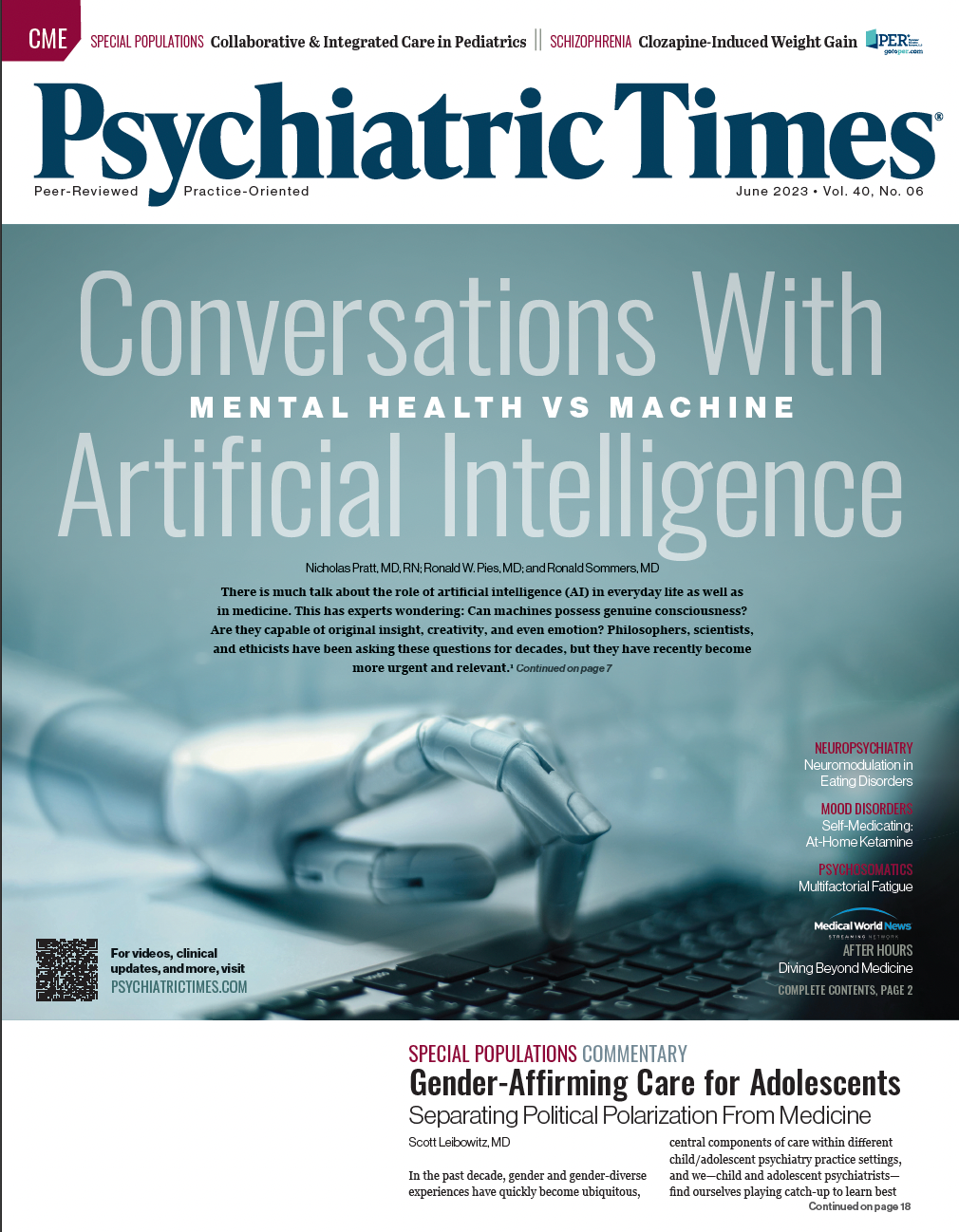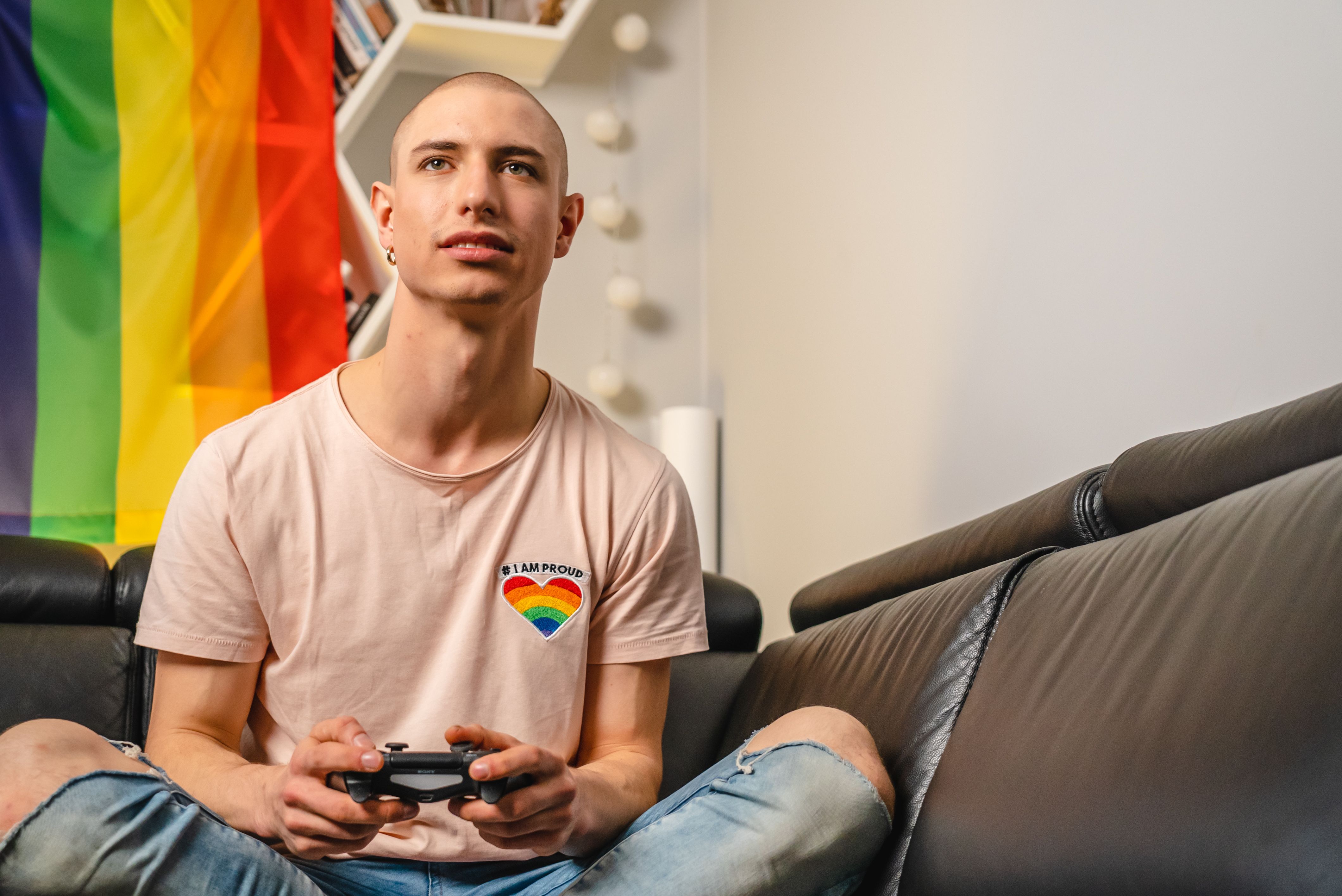Publication
Article
Psychiatric Times
Psychiatry on TikTok: Providing Education to Teens in an Ethical Manner
Author(s):
84% of 500 TikToks offered inaccurate or potentially damaging medical advice. How can you address TikTok as a mental health professional?
chathuporn/AdobeStock

SPECIAL REPORT: CHILD AND ADOLESCENT PSYCHIATRY
"Have you considered rocket fuel? It is the perfect stimulant to replace Adderall!” Swipe. “PTSD? Try tap therapy! It is better than any drug on the market!” Swipe and groan.
Anyone who spends time on social media has seen these ads. Influencers, vloggers, celebrities, and everyone in between are selling a new unproven treatment for a mental health disorder. What was once found only on television and in magazines now appears on our patients’ smartphones, particularly via social media applications like TikTok.
Mental Health Misinformation Origins
The origin of the adolescent mental health misinformation debacle plaguing social media platforms involved multiple factors striking simultaneously. Adolescents prize peer acceptance and identity formation, for which social interaction, group affiliation, and peer affirmation are necessary.1 However, the COVID-19 pandemic quarantine deprived youth of such experiences, replacing them with social isolation. Concurrently, youth mental health deteriorated. In early 2021, emergency department visits in the United States for suspected suicide attempts were 51% higher for adolescent girls and 4% higher for adolescent boys compared with early 2019.2 Access to mental health professionals, already limited, became even more so.
Understandably, adolescents turned to digital means of connection, mainly through social gaming and social networking platforms like TikTok, where they shared mental health challenges. Users posted videos on TikTok describing their difficulties (eg, racing thoughts, depressive feelings, and inattention), to which peers responded via commenting, liking, or sharing the video with others.
The Snowball Effect
As viewership for such videos grew, a market formed. Opportunistic start-up companies hired influencers to advertise untested supplements, remedies, and other forms of treatment. Telemedicine companies such as Cerebral also saw potential, spending millions of dollars on predatory advertising, espousing nonspecific symptoms as proof of diagnoses for attention-deficit/hyperactivity disorder to lure customers into treatment.3 Peak Health Global, a self-proclaimed general wellness start-up, advertised remote ketamine treatment for depression. Peak has been criticized for lacking psychiatrist oversight of patient care and a lenient screening process.4
Mental health misinformation became rampant on TikTok. A recent study examined 500 TikTok mental health videos totaling roughly 25 million views. Medical professionals found that 84% offered inaccurate or potentially damaging advice, many of which featured unqualified content creators or encouraged self-diagnosis.5
Is This the Psychiatrist’s Problem?
A conflict often arises when medical professionals consider speaking publicly about physical and mental health. We are often trained to maintain confidentiality, prioritize neutrality and nuance, and represent our profession whenever we address the community. Our hesitation to speak out may lead us to believe that we are protecting our image, careers, and alliance with our patients. However, we live in an age in which access to inaccurate mental health information is nearly ubiquitous while access to appropriate mental health care is rare. More than 28% of the 1.5 billion users on TikTok are younger than 18 years, and only 3% of the most popular mental health videos on TikTok are created by credentialed mental health clinicians.6,7
Therefore, the educational void is largely filled by those lacking psychiatric expertise. The question then becomes: If we psychiatrists do not use social media to educate teens and parents living in an adolescent mental health crisis, who will?
Ethical Social Media Practices
Diving into the world of social media content creation can be tricky for the psychiatrist. Regarding ethical considerations, psychiatrists interested in creating educational content should consider 2 realms of action: inside the application and outside the application.
Inside the app
Psychiatrists placing themselves in the public forum by posting TikTok videos should follow these basic guidelines.
1. Refrain from offering medical advice. Disclaimers indicating that each video is for general education and not personalized to individual viewers emphasize how general information may not be applicable to everyone.
2. Avoid polarizing language. Much of social media thrives on hooks, emphatic responses, and black-and-white thinking. Most viewers younger than 18 years are unfamiliar with the complexity of mental health that our expertise imparts. Becoming a popular content creator with a balanced approach to psychoeducation empowers viewers’ mental flexibility and teaches them to resist coming to quick conclusions regarding diagnosis or treatment.
3. Offer evidence-based information in simplified language. Psychiatrists have been educated to effectively interpret data and sort out biases. Using this craft, we must interpret scientific literature and summarize findings in terms that teens and parents can understand in 60-second segments.
4. Announce disclosures. Psychiatrists who engage in advertising via social media must also announce their financial disclosures. Highlighting personal biases and disclosing financial relationships that might influence a message of a video are important even in cases when the video is not advertising anything.
5. Engage with the audience, not the patient. Access to mental health care is severely limited. Individual users often reach out to content creators, asking for personalized medical advice. Psychiatrists must avoid establishing physician-patient relationships on social media. A practical approach to such inquiries includes either ignoring the messages or replying that such a recommendation is impossible.
Outside the app
When TikTok is turned off, ethical and legal dilemmas remain for the posting psychiatrist. Utilizing certain approaches can afford some security.
1. Have institution approval. Many psychiatrists work within an institution with strict social media policies that hold employees responsible as brand representatives. Speaking with the human resource department, department chair, and communications department prior to beginning to post content minimizes risk of reprimand or termination due to violation of employee contracts.
2. Consider beneficence and fidelity. Physicians may earn compensation by advertising brand material on TikTok. Therapy and medication services often seek to hire psychiatrists as spokespersons. In cases of advertised services benefiting audience members who otherwise would lack access to care, their promotion would fit the rule of beneficence (ie, acting for the benefit of the patient). However, a psychiatrist failing to disclose their financial relationship regarding said service violates fidelity (ie, the act of being loyal or truthful in their relationships with others). Both ethical terms must be weighed by psychiatrists engaged in such work.
3. Follow the guidelines. Social media existed before TikTok. Governing bodies such as the American Medical Association and the Substance Abuse and Mental Health Services Administration have guidelines that psychiatrists should follow when creating an online presence.8,9
Concluding Thoughts
Social isolation, a need for connection, and pursuit of identity drove teens to TikTok during the pandemic. A shared interest in mental health compelled many to use TikTok to understand psychiatric illness. As experts in our field, psychiatrists have the opportunity and obligation to educate the public in a safe and ethical manner, providing informative content that is both nuanced and engaging. To ignore social media’s potential as a vehicle for psychoeducation would risk failing our calling as advocates for adolescent mental health.
Dr Sood is a child and adolescent psychiatrist working with SSM Health Treffert Studios in Fond du Lac, Wisconsin. He specializes in treating neurodivergent youth through a strengths-based approach as well as educating parents and patients about the pros and cons of digital media.
References
1. Brown BB, Lohr MJ. Peer-group affiliation and adolescent self-esteem: an integration of ego-identity and symbolic-interaction theories. J Pers Soc Psychol. 1987;52(1):47-55.
2. Office of the Surgeon General. Protecting youth mental health. US Department of Health & Human Services. 2021. Accessed February 27, 2023. https://www.hhs.gov/sites/default/files/surgeon-general-youth-mental-health-advisory.pdf
3. Little O. TikTok raked in over $14 million from a company under investigation for allegedly overprescribing stimulants. Media Matters for America. May 26, 2022. Accessed February 27, 2023. https://www.mediamatters.org/tiktok/tiktok-raked-over-14-million-company-under-investigation-allegedly-overprescribing
4. Dickson EJ. They’re pushing cut-rate ketamine therapy on TikTok. Rolling Stone. August 27, 2022. Accessed February 27, 2023. https://www.rollingstone.com/culture/culture-features/peak-ketamine-therapy-tiktok-startup-1392775/
5. How accurate is mental health advice on TikTok. PlushCare. November 28, 2022. Accessed February 27, 2023. https://plushcare.com/blog/tiktok-mental-health/
6. Iqbal M. TikTok revenue and usage statistics (2023). Business of Apps. Updated January 9, 2023. Accessed February 27, 2023. https://www.businessofapps.com/data/tik-tok-statistics/
7. Miodus S, Jimenez A. TikTok therapy: an exploratory study on popular TikTok mental health content. Paper presented at: Technology, Mind & Society 2021 Conference Proceedings. 2021. Accessed February 27, 2023. https://assets.pubpub.org/2tv2iqfv/41634765009549.pdf
8. AMA Code of Medical Ethics: professionalism in the use of social media. American Medical Association. Accessed February 27, 2023. https://code-medical-ethics.ama-assn.org/ethics-opinions/professionalism-use-social-media
9. Sample social media guidelines. Substance Abuse and Mental Health Services Administration. Updated April 14, 2022. Accessed February 27, 2023. https://www.samhsa.gov/childrens-awareness-day/resources/sample-social-media-policy







